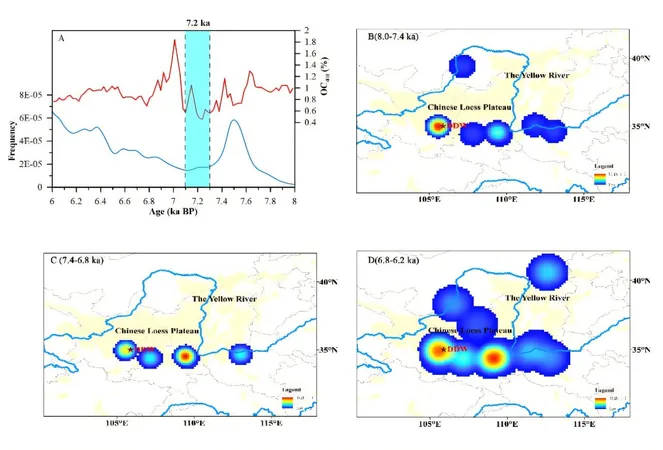
Breakthrough Study Reveals Earth-Like Planets Are Common—But Water Worlds? Not So Much!
2025-09-20
Author: Liam
A Shocking Revelation in Planetary Science
An international team of scientists has launched a groundbreaking investigation into the existence of water worlds, revealing that while Earth-like planets might be more abundant than we thought, the elusive sub-Neptune water worlds are likely quite rare. This discovery could reshape our understanding of where to search for life in the cosmos.
The Research Pioneers
Led by esteemed researchers from ETH Zurich, the Max Planck Institute for Astronomy, and UCLA, this study uncovers important implications for astrobiology—specifically, it may diminish the previously high hopes for finding life on water worlds while boosting optimism for Earth-like planets.
A Cosmic Landscape with 5,000 Exoplanets!
Since the dawn of exoplanet discovery three decades ago, astronomers have identified over 5,000 planets beyond our solar system. Most of these worlds, however, are gas giants like Jupiter, largely unsuitable for life as we know it. Within this vast array, a particular class of exoplanets known as sub-Neptunes has drawn intense interest from scientists.
The Mystery of Hycean Worlds
Sub-Neptunes are larger than Earth yet smaller than Neptune, often thought to form in the icy realms beyond their stars. Current models suggest that as these planets drift closer to their suns, they could heat up and shed an icy exterior, transforming into Hycean worlds—envisioned as planets with expansive oceans and hydrogen-rich atmospheres.
A Game-Changing Finding
However, the latest study highlights a crucial limitation in the water world hypothesis. Researchers discovered that these planets undergo these massive transformations when they develop a persistent hot magma ocean, which interacts chemically with their atmosphere in ways that were previously overlooked. Their simulations revealed these processes could significantly reduce the amount of water these planets retain.
Earth: Not So Extraordinary?
Professor Caroline Dorn, a lead author on the study, bluntly stated, 'The Earth may not be as extraordinary as we think. It appears to be a typical planet.' Their findings indicate that there are no substantial water layers making up half of a planet's mass, a possibility that many previous models predicted. Instead, the water on potential Hycean worlds may be confined to a meager percentage of the planet's composition.
The Silver Lining: More Earth-Like Planets!
Despite the discouraging news around water worlds, this research surprisingly suggests that Earth-like planets, suitable for holding life, are likely more common than anticipated. This means that while the search for water worlds may dim, the hunt for Earth-like counterparts gains renewed vigor.
Implications for the Future of Astrobiology
The researchers stressed that the implications of these findings could be profound for planetary formation theories and understanding exoplanetary atmospheres. With the potential for a new breed of Earth-like planets out there, astrobiologists remain hopeful that powerful future telescopes will help uncover these elusive worlds and advance our quest for extraterrestrial life.
A New Era of Discovery?
The study, aptly titled 'Sub-Neptunes Are Drier Than They Seem: Rethinking the Origins of Water-Rich Worlds,' was published in the Astrophysical Journal Letters. The prospect of conditions favorable for life existing only on smaller, more Earth-like planets beckons a new era in the search for life across the universe.









 Brasil (PT)
Brasil (PT)
 Canada (EN)
Canada (EN)
 Chile (ES)
Chile (ES)
 Česko (CS)
Česko (CS)
 대한민국 (KO)
대한민국 (KO)
 España (ES)
España (ES)
 France (FR)
France (FR)
 Hong Kong (EN)
Hong Kong (EN)
 Italia (IT)
Italia (IT)
 日本 (JA)
日本 (JA)
 Magyarország (HU)
Magyarország (HU)
 Norge (NO)
Norge (NO)
 Polska (PL)
Polska (PL)
 Schweiz (DE)
Schweiz (DE)
 Singapore (EN)
Singapore (EN)
 Sverige (SV)
Sverige (SV)
 Suomi (FI)
Suomi (FI)
 Türkiye (TR)
Türkiye (TR)
 الإمارات العربية المتحدة (AR)
الإمارات العربية المتحدة (AR)